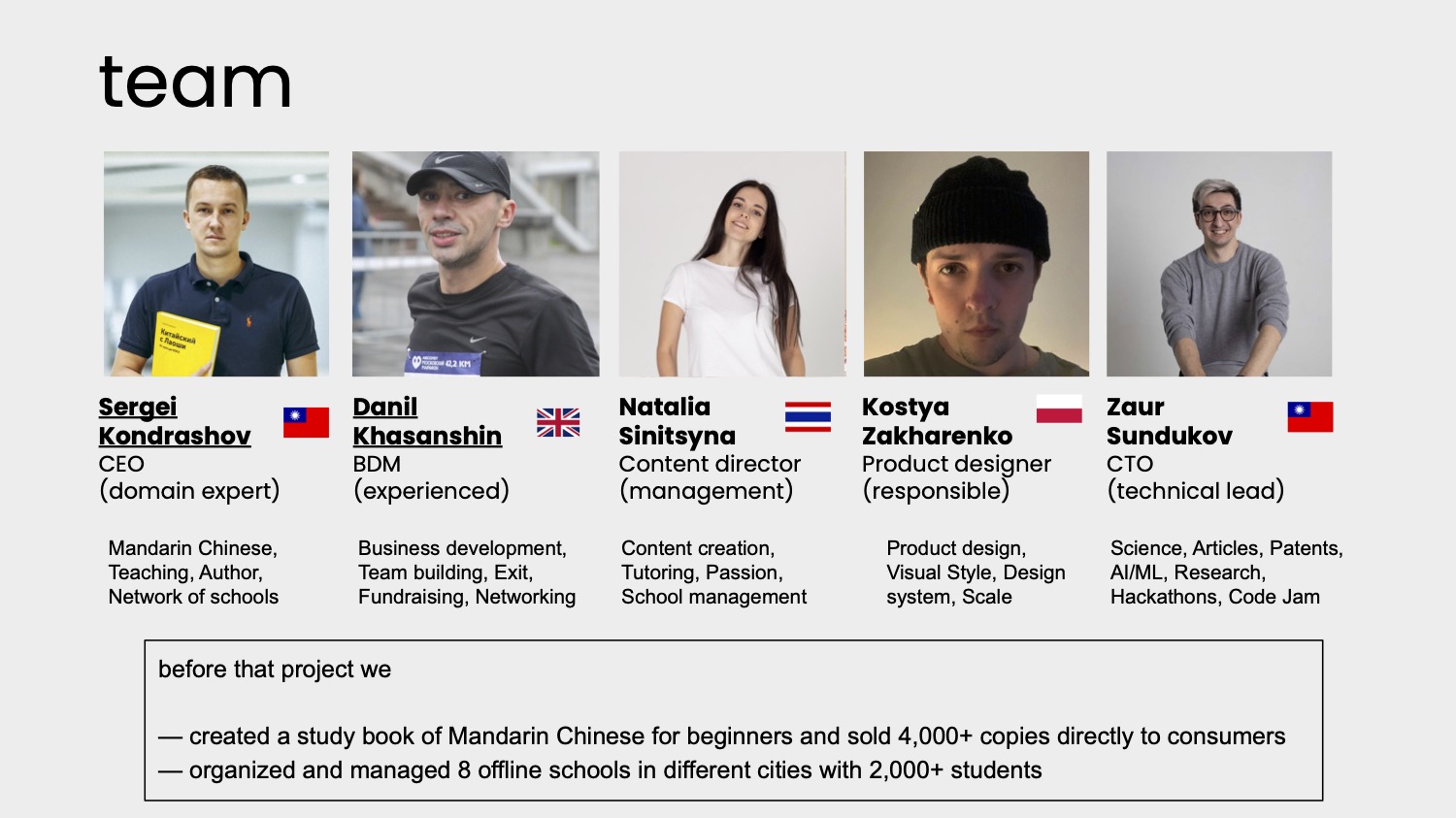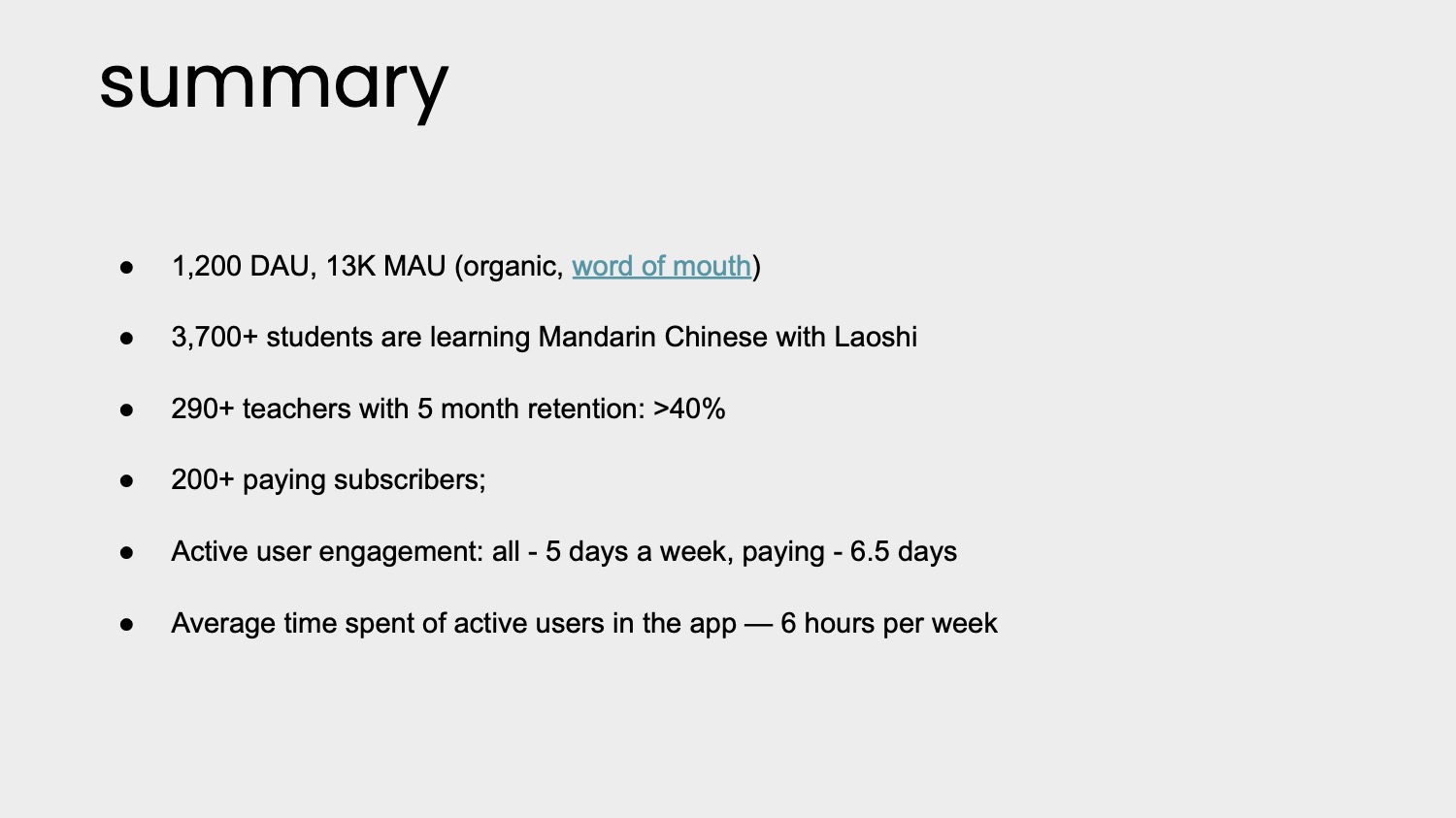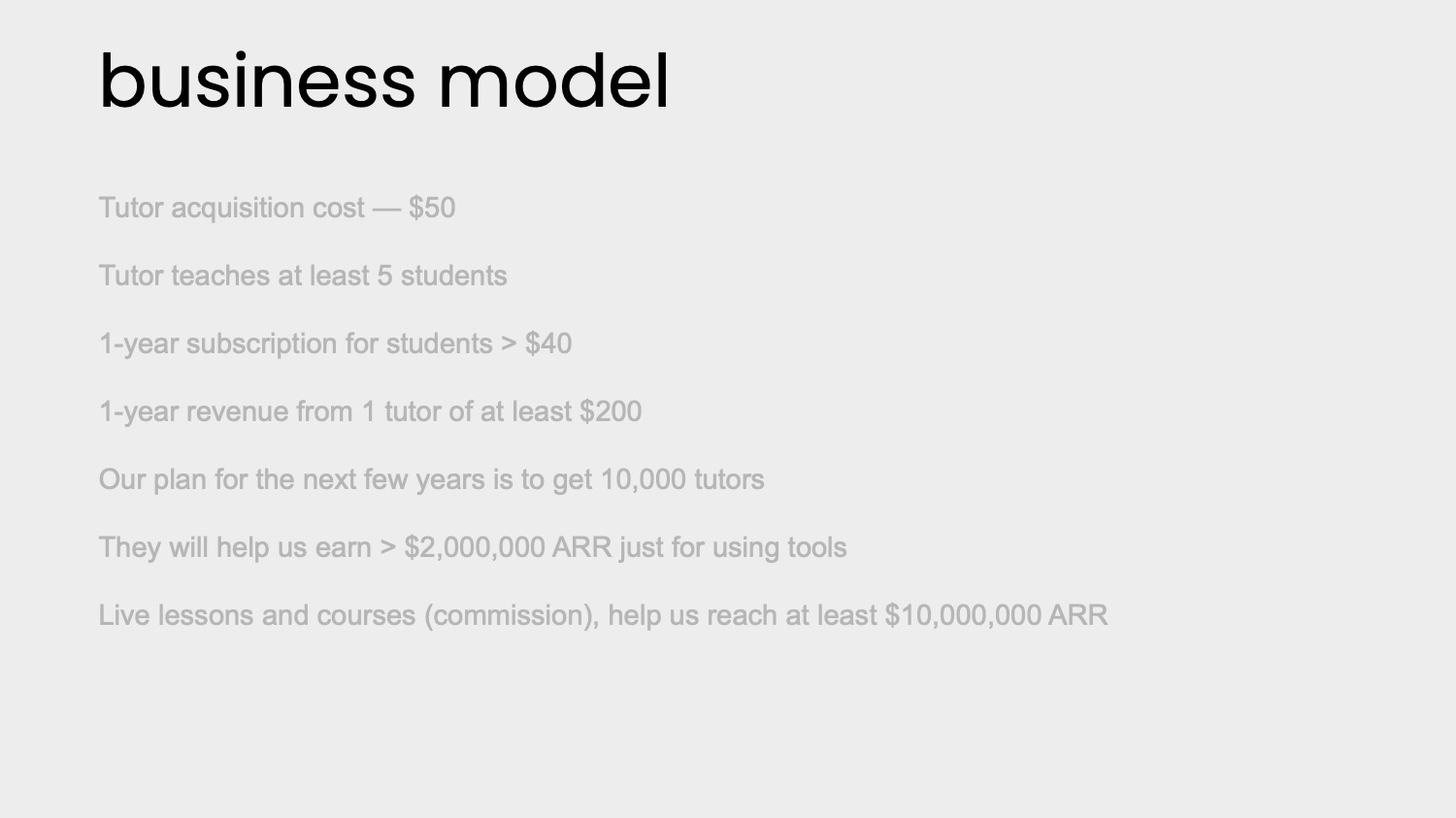Most of the pitch deck teardowns to date (here’s a handy list of the more than 30 we have published so far) have been for institutional funding rounds, typically in the millions or tens, even hundreds of millions of dollars raised.
Those are interesting to look at, of course, but I also know that many of you will be much earlier in your journey. I’ve been looking for a good example of an angel deck to share with you, and I found just that in Laoshi‘s angel deck. The company tells me it raised $570,000 at a $5 million cap for its very early-stage language-learning app, explicitly targeted at Chinese tutors and their students.
The deck ain’t fancy, and it isn’t perfect, but the company claims it was successful, so let’s take a look at what it got right — and what could’ve been improved.
We’re looking for more unique pitch decks to tear down, so if you want to submit your own, here’s how you can do that.
Slides in this deck
Laoshi’s deck consists of 11 main slides and four appendix slides.
- Cover slide
- Problem slide
- Market slide
- Solution slide
- Competition slide
- Road map slide
- Team slide
- Teacher growth slide
- Teacher retention slide
- Summary slide
- “Contact us” slide
- Appendices cover slide
- Appendix I: Viral effect slide
- Appendix II: Business model slide
- Appendix III: “The ask” slide
Three things to love
The deck is sparse and simple, which is pretty refreshing — a lot of early-stage decks don’t seem to have much of a story woven into them and try to cram way too much information (that isn’t really relevant) onto the slides.
The overarching thing you have to remember for an angel deck is that your investors know they are in the business of high-risk investing. So, make clear why your company is a good bet, that you have a path to solving a real problem and acquiring a huge market and that you have the team to pull it off.
Team slide is A+

[Slide 7] A team slide should convince investors that you’re the right folks to build this company. Image Credits: Laoshi
I’m not sure if I’m 100% on board with the H3 ethos of founding team building — it’s far more important that you have the right, deep domain knowledge and drive (often expressed as “founder-market fit”), but you also need a breadth of skills to build a good startup. I do admit H3 often is a good template to check out a team’s skill set quickly and to determine whether there are major gaps in the team.
This team slide does two things: It shows that the team is international and distributed. It is diverse and experienced. And it manages — in the box at the bottom — to show that the team has market-relevant experience. Now, I would still need a voice-over to find out:
- How did the team meet?
- What are each team member’s strengths and weaknesses?
- What’s missing from the team?
- Why can this team deliver in a way that nobody else can?
- What is the hiring plan for the current fundraise?
But as a base-level team slide, this ticks a lot of boxes. What it doesn’t show, however, are past successes in startups, and I’d want to dig into that a bit more as well. It certainly is a much better slide than many of the previous ones we’ve covered in these teardowns — you know, the ones that basically stick a Stanford and Tesla logo underneath a picture and call it a day.
The thing you can learn from this slide as a startup is that your team slide is up there with the most important slides, and you’ve got to make it count. Use it to tell your story and to convince us your team is part of the reason to bet on you.
Good summary slide

[Slide 10] A good summary slide can be a great way to remind investors why they should be excited. Image Credits: Laoshi
Almost as important as the numbers themselves are which numbers the company is measuring. It shows monthly and daily active users (MAU/DAU), which are crucial metrics to see how sticky an app is. It shows the number of teachers and how long they are staying on the platform, which again speaks to stickiness and the reach the company has. It talks about active user engagement, which shows that people are using the app actively.
For perfect marks, I’d love to have seen these numbers as graphs rather than just as collated numbers. I’d also have liked to see dollar figures here. It’s great that there are 200+ paying subscribers, and that’s impressive for a pre-funding company. But even though the revenue numbers probably are very small, seeing a graph of those, too, is important. If you don’t put it on the slide, the investor will be suspicious about why and ask for it anyway — you may as well skip that conversation and give ’em what they need right off the bat.
The thing you can learn from this slide as a startup is to be deeply aware of the metrics that are going to help you build and deliver your business.
Business model front and center

[Slide 14] It’s always a good idea to show that you understand the levers in your business. Image Credits: Laoshi
Having said that, these numbers are super important in your conversations with your investors; essentially, you’re showing how you are thinking about your business and your market and that you understand the levers in your business. In other words: What if every tutor had 10 students instead of five? What if every tutor cost $100 to acquire instead of $50? By plugging all of that into a model and running experiments to increase your trust in the model, you can get a long way toward building a great picture of your business in numbers.
In the rest of this teardown, we’ll take a look at three things Laoshi could have improved or done differently, along with the company’s full pitch deck!
Pitch Deck Teardown: Laoshi’s $570K angel deck by Haje Jan Kamps originally published on TechCrunch















 English (US) ·
English (US) ·